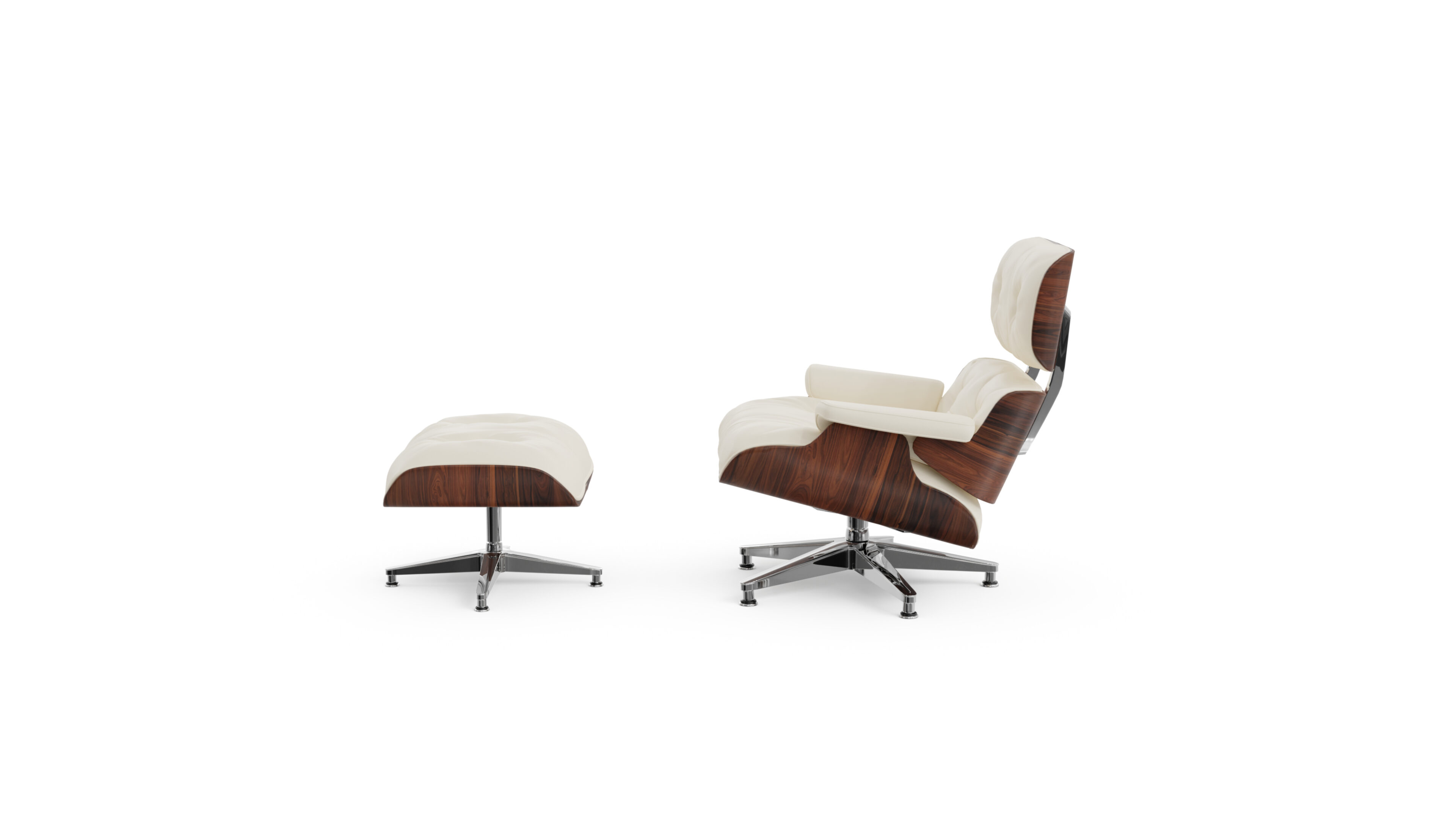
Vico Magistretti Biography
Vico Magistretti (1920-2006) was an influential Italian industrial designer and architect who shaped modern Italian design. He began his career after graduating from Milan Polytechnic in 1945. Magistretti is renowned for his innovative furniture designs, particularly the Maralunga sofa (1973), which featured the first-ever adjustable headrest in a production sofa. His architectural works include the Chiesa di San Simpliciano in Milan and the Cusano Milanino town hall. Magistretti’s designs often combined simplicity with ingenuity, earning him numerous awards including the Compasso d’Oro in 1967 and 1979. His work continues to influence contemporary furniture design, with many of his pieces becoming icons of 20th-century design.
Early Life and Education
Born in 1920 in Milan, Italy, Vico Magistretti grew up in a family with a strong architectural background. His father, Pier Giulio Magistretti, was a well-known architect, which undoubtedly influenced young Vico’s career path. Magistretti began his studies in architecture at the Milan Polytechnic in 1939. However, his education was interrupted by World War II, during which he spent time in Switzerland. He returned to Italy after the war and completed his degree in 1945, laying the foundation for a career that would span over six decades and leave an indelible mark on Italian design.
Career and Achievements
Magistretti’s career began in the post-war period, a time of great cultural and economic change in Italy. He started working in his father’s studio, where he was involved in various urban planning and architectural projects. However, it was in furniture and industrial design that Magistretti would make his most significant contributions.
In the 1960s and 1970s, Magistretti emerged as one of the leading figures in Italian design. He began collaborations with several prominent furniture manufacturers, including Cassina, Artemide, and De Padova. These partnerships would result in some of his most iconic designs.
One of Magistretti’s most revolutionary designs was the Maralunga sofa, created for Cassina in 1973. This sofa featured the first-ever adjustable headrest in a production sofa, an innovation that transformed the concept of comfort in seating design. The Maralunga’s success was immediate and enduring, becoming a symbol of Italian design excellence.
Other notable furniture designs by Magistretti include the Carimate chair (1959), the Eclisse lamp (1967), and the Atollo lamp (1977). Each of these pieces showcased Magistretti’s ability to combine simplicity of form with innovative functionality.
While Magistretti is best known for his furniture designs, he also had a significant career in architecture. His architectural works include the Chiesa di San Simpliciano in Milan, a masterful renovation of a 4th-century church, and the Cusano Milanino town hall, which exemplifies his modernist approach to civic architecture.
Signature Designs
Vico Magistretti’s portfolio includes a wide range of furniture and lighting designs that have become icons of 20th-century design. Some of his most notable works include:
1. Maralunga Sofa (1973): A revolutionary sofa design featuring the first adjustable headrest in a production sofa.
2. Carimate Chair (1959): A elegant dining chair that blends traditional craftsmanship with modern design.
3. Eclisse Lamp (1967): An innovative table lamp with an adjustable shade that can create various lighting effects.
4. Atollo Lamp (1977): A geometrically pure table lamp that has become an icon of modern lighting design.
5. Selene Chair (1969): One of the first single-form plastic chairs, showcasing Magistretti’s interest in new materials and manufacturing techniques.
Design Philosophy and Approach
Magistretti’s design philosophy was characterized by a focus on simplicity, functionality, and innovation. He believed in creating designs that were both aesthetically pleasing and highly practical, often saying that “there is no excuse for bad design.” This approach led him to constantly seek new ways to improve everyday objects, resulting in groundbreaking designs like the Maralunga sofa.
A key aspect of Magistretti’s work was his interest in new materials and manufacturing techniques. He was always eager to explore the possibilities offered by technological advancements, as evidenced by his early adoption of plastic in furniture design with pieces like the Selene chair.
Magistretti was also known for his collaborative approach to design. He worked closely with manufacturers, believing that good design emerged from a dialogue between designer and producer. This approach allowed him to push the boundaries of what was possible in furniture production, resulting in innovative designs that were both beautiful and feasible to manufacture.
Another important aspect of Magistretti’s philosophy was his belief in the longevity of good design. He aimed to create pieces that would stand the test of time, both in terms of durability and aesthetic appeal. This principle is evident in the fact that many of his designs remain in production today, decades after their initial creation.
Legacy and Influence
Vico Magistretti’s influence on Italian and international design is profound and enduring. His innovative approach to furniture design, particularly his focus on combining simplicity with functionality, has inspired generations of designers. Many of his pieces, such as the Maralunga sofa and the Atollo lamp, have become icons of 20th-century design, continuing to be produced and admired today.
Magistretti’s work has been recognized with numerous awards throughout his career, including the prestigious Compasso d’Oro in 1967 for the Eclisse lamp and again in 1979 for the Maralunga sofa. He was also awarded the Gold Medal at the 1951 Triennale, and the Grand Prix at the 1954 Triennale, among many other honors.
As an educator, Magistretti influenced many young designers through his teaching at the Royal College of Art in London, where he was a visiting professor for several years. His legacy continues through the Fondazione studio museo Vico Magistretti in Milan, which preserves his archive and promotes his design philosophy.
Magistretti’s approach to design, which emphasized both innovation and timelessness, continues to be relevant in today’s design world. His work serves as a model for creating furniture that is not only functional and beautiful but also capable of standing the test of time. As contemporary designers grapple with issues of sustainability and longevity in design, Magistretti’s principles offer valuable insights and inspiration.
Vico Magistretti FAQs
What is Vico Magistretti best known for?
Vico Magistretti is best known for his innovative furniture designs, particularly the Maralunga sofa (1973) which featured the first-ever adjustable headrest in a production sofa. He’s also renowned for his lighting designs like the Eclisse lamp and the Atollo lamp.
What is significant about the Maralunga sofa?
The Maralunga sofa, designed in 1973, was revolutionary for its adjustable headrest – a feature never before seen in a production sofa. This innovation transformed the concept of comfort in seating design and became an icon of Italian design.
What awards did Magistretti win?
Magistretti won numerous awards throughout his career, including the Compasso d’Oro in 1967 for the Eclisse lamp and in 1979 for the Maralunga sofa. He also received the Gold Medal at the 1951 Triennale and the Grand Prix at the 1954 Triennale.
How did Magistretti influence modern design?
Magistretti influenced modern design through his innovative approach to furniture and lighting design, combining simplicity with functionality. His use of new materials and manufacturing techniques, and his belief in creating timeless designs, continue to inspire contemporary designers.
























